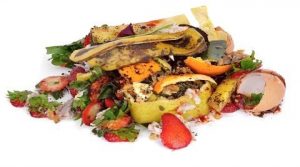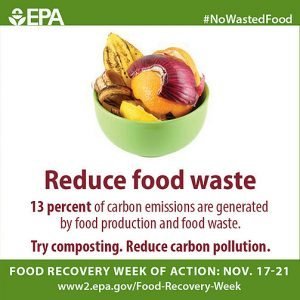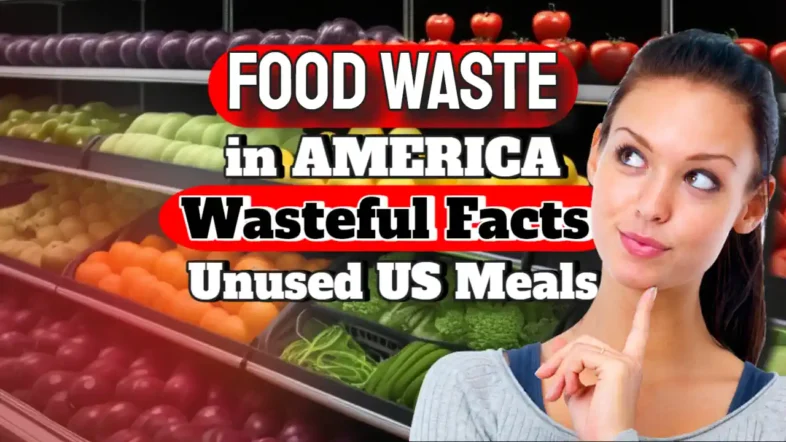The food waste in America is huge. The facts show that this is both a major problem for the environment and at the same time reducing it could be a great asset. In the USA, the population wastes so much food that correspondingly large quantities of renewable sustainable, 24/7 energy could be created from the 60 million tonnes annually of food waste the nation produces.
“If food waste were a nation, it would certainly be the third-largest”.
The United States and China are the largest emitters of greenhouse gases. If food waste were a nation, it would certainly be the third-largest after those two.
To get more information read on regarding the effect of food waste on the environment as well as just how huge the trouble is right here in the United States.
Just how much food is wasted in the United States?
The following is a transcription of the words spoken in the video above:
In the U.S., as much as 40% of the food that is produced annually goes wasted.
That translates into an economic loss of $218 billion each year.
Also at the specific level, a home family of 4 invests on average $1,500 or even more annually on food that never ever gets eaten.
What are the links between the amount of food that we waste and the ecological effects of food waste on environmental modification?
 The greenhouse gasses associated with food waste total up to about 37 million passenger automobiles when travelling.
The greenhouse gasses associated with food waste total up to about 37 million passenger automobiles when travelling.
Not only do you have the contributions from methane when food waste deteriorates in a garbage dump, but you have all these various other resources that enter into the production, production, transport, storage, and also distribution of food.
All of those sources are swallowed up when we squander food instead of consuming it.
“Of the top 100 most impactful things that we can do to deal with environmental adjustment, food waste prevention is number 3. It's not solar power, it's not wind power, it's food waste avoidance.”
What are the most significant factors to food waste here?
Customers and consumer-facing organizations, dining establishments, and also snack bars are in charge of over 80% of the food waste in this country.
For example, in restaurants, the largest bulk of food waste originates from what is remaining on people's plates, or post-consumer waste. So, if we want to really tackle the food waste that's taking place in dining establishments, for instance, we are required to begin dealing with the harder component of the problem, which is client practices.
Americans squander approximately 40% of the food they produce
Culture plays a huge role in it and is actually part of the equation in the U.S. is a fundamental method. In this nation, I assume we have particular assumptions concerning how food waste exists.
We see it as wealth, and also food is extremely economically low-priced in the US.
So, the expense to companies of wasting food is not so enormous when compared to either the customer assumption or business' assumption of what the consumer anticipates seeing when they stroll into a resort buffet or walk into a grocery store aisle.
What are the steps that private customers can take?
We don't want consumers to seem like they're the bad guys right here. A great deal of the resource reason for food waste is connected to things like day labels.
Date labels really did not actually exist prior to the 1970s, as well as, before after that, individuals would certainly use their senses to detect whether food is still edible. They would certainly use the odour examination on milk. They may try a bit of yoghurt.
And also if something tasted fine or scented alright, it really did not smell like it had actually gone off, they would certainly eat it.
What you see when you check out a date label that states “Best if made use of by” has nothing to do with food safety, however, it's a manufacturer's suggestion about when this food thing is at its height of freshness, which is an inherently subjective thing.
Actually, besides child formula, there is no policy around date tags.
So, there's an enormous chance to change date labels to be constant with public health information and also scientific research, and also, in doing so, prevent a lot of food from going to waste.

The Food Waste Opportunity for Renewable Energy and Fertiliser Production in the US
America is the world's largest consumer nation. So, think positively and all that food waste in America can be used, and become one of the main feedstocks for AD plants throughout America.
US EPA and USDA Food Waste Reduction Challenge to Reduce Food Waste in America
How is the nation planning to exploit the massive potential of food waste in America, so far?
The US EPA and USDA last year announced a food waste reduction challenge that looks to have the potential to reduce the amount of food waste going to landfills by 50% by 2030. It's estimated that the food waste in the US is approximately 50 million tonnes per year, which is going to landfills. Plus, another 10 million tonnes of food crop which is discarded or never makes it out of the field, are being ploughed back into the land.
A New US-Wide Roadmap for Food Waste Anaerobic Digestion Driven by Stakeholders and US Businesses
There is clearly a very substantial food waste digestion opportunity for the US anaerobic digestion and biogas industry, but government departments can only talk about it. It needs investors to commit funds and businesses to set up biogas digestor building projects before anything can happen toward achieving the targets.
A group called REFED (Rethink Food Waste) has realized that Food Waste in America can be big business. It has set up its own body, which has just released a report on its quest to stop wasting food waste, titled: “Roadmap to Reduce U.S. Food Waste”. The Roadmap sets a target for a 20% reduction in food waste nationally over the next 10 years.
ReFED is a collaboration of over 30 business, nonprofit, foundation, and government leaders committed to reducing food waste in the United States. ReFED seeks to unlock new philanthropic and investment capital, along with technology, business, and policy innovation, which is projected to catalyze tens of thousands of new jobs, recover billions of meals annually for the hungry, and reduce national water use and greenhouse gas emissions. via the REFED Report.
ReFED envisions a future where combating food waste is a core driver of business profits, job creation, hunger relief, and environmental protection.
• The Roadmap shows an achievable path to a 20% reduction of food waste within a decade through 27 cost-effective, feasible, and scalable solutions. These solutions would divert
13 million tons from landfills and onfarm losses.• Implementing the Roadmap is projected to generate 15,000 new jobs, double recovered food donations to nonprofits (1.8 billion meals per year), reduce up to 1.5% of freshwater use (1.6 trillion gallons per year), and avoid nearly 18 million tons of
greenhouse gas emissions annually. REFED Report.
US Food Waste Digestion Plant Installation Progress So Far
 There is already some growth in food waste on the American front, seeing the development of food waste digesters.
There is already some growth in food waste on the American front, seeing the development of food waste digesters.
In California, there is a project in Sacramento done by a company called Clean World, and they are taking food waste from the universities in the area as well as food from food production facilities. They take about 100 tonnes per day of food waste.
They upgrade the biogas and use it in vehicle fuel and they fuel a fleet of 40 trucks that pick up the organic waste from these facilities.
So we're in the early stages of this, but there is an incredible opportunity, there are many cities and states that are starting to now restrict food waste and other organics from going to landfills. So we are starting to see a move in that direction as well.
Cities like Los Angeles, New York City and Chicago are starting to implement regulations that will divert food waste to other management strategies.
Anaerobic digestion is the primary technology now, for managing food waste.
What about co-digestion and food waste with the wastewater at WWT plants? Yes, very good question. There are several of those projects going on in the country. Some of them that process food waste in America are very large scale.
Los Angeles County Food Waste Anaerobic Digestion Pilot Project
The Los Angeles County sanitation district in Los Angeles, California, currently has a pilot project going on with waste management incorporated. And, they are taking between 40 and 80 tonnes per day of slurried food waste that's delivered to the Carson wastewater treatment plant in Los Angeles.
In that project, they're using it for electricity production.
New York City Food Waste Anaerobic Digestion Pilot Project
In New York City, the NYC Department of Environmental Protection is working with the national grid, which is the natural gas utility in the area. In that case, the delivered food waste to the digester is converted into biogas, and the biogas they produce will be used, after upgrading it to biomethane as renewable natural gas (RNG).
It will be upgraded for natural gas injection and, we believe, used for vehicle fuel, possibly heating through a CHP project.
Use of Excess Capacity at Waste Water Treatment Digesters in California
It has been rumoured via a statistic released recently, that excess capacity at wastewater treatment digesters in California could actually handle about 70% of the food waste produced in California. So it's a possible way to raise the amount of food waste in America which is recycled, which definitely needs attention, and there is a lot of existing infrastructure and capacity to take this food waste without having to build new facilities.
We think that this is a very interesting opportunity, and we are certainly hopeful that there will be a lot more growth in this area in 2017. As found on Youtube
Further information on food waste is here.
[Article uploaded February 2017. Updated April 2022.]




